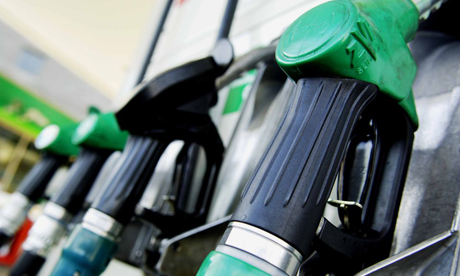Petrol Stations In Residential Areas Given One Year To Move
Source: Vientiane Times
Petrol stations that open for business near an existing facility or are too close to a residential area must move away within one year from now, a senior government official has said.
Minister of Industry and Commerce Ms Khemmani Pholsena earlier this month issued an instruction on the implementation of Prime Ministerial Decree No. 331, which regulates the petroleum business including petrol stations.
The instruction was announced after reports emerged that many petrol stations are operating in prohibited areas, with several located too close together and some being too close to dense communities.
Under the 28-page decree issued in October last year, a new petrol station must be at least 1,000 metres away from an existing one. They should also be 100 metres from a dense community, a school, hospital, market, river, winding or steep road, and crossroads.
But in fact several petrol stations are located next to each other while some are on the opposite sides of a road, Secretary of the Lao Petroleum and Gas Association, Mr Thong Thammalath, told Vientiane Times previously.
We are offering the highest and best coverage for cars & motorbikes in Laos !
And we offer the most competitive premiums !
Life’s complicated enough. So we’ve made buying car insurance simple and fair, with all the benefits you’d expect and more. That’s car insurance the way it should be.
Try us and get your quote here or contact us at info@jclao.com / 020 77 100 200
This means that smaller businesses are struggling to compete with bigger ones that opened up later, as larger operations have more capital to invest in and provide more services.
Reports also emerged that several petrol stations were in close proximity to communities, which posed a danger in the event of an accident.
Director General of the Domestic Trade Department, Ministry of Industry and Commerce, Mr Bounthien Keosipha said the decree was not the first regulation to impose such stipulations.
A regulation issued by the Ministry of Public Works and Transport some years ago also required petrol stations to be at least 1,000 metres apart and 100 metres away from communities.
“But many operators violated the regulation,” Mr Bounthien told Vientiane Times.
Poor coordination among the relevant state departments and poor enforcement of the regulation was also to be blamed for continued violation of the ruling.
In issuing the Prime Ministerial Decree, the government intends to reinforce the regulation and petrol stations located in prohibited areas shall be removed, Mr Bounthien said.
Operators of facilities that were established before a second petrol station opened nearby are entitled to sue through the relevant dispute-solving authorities to request for the removal of a station that was too close, he added.
“It depends on the owner of the first petrol station. If they want to sue they have the right to do so and let the relevant authorities decide the outcome,” Mr Bounthien said.
But if both parties can reach an agreement to operate their businesses side by side, that was acceptable, he added.
The removal of petrol stations located near prohibited areas such as a community, school, hospital or market comes under the responsibility of the relevant state departments.
The ministry is preparing to disseminate the Prime Ministerial Decree and the ministerial instruction to provinces across the country and to regulate the situation accordingly.
“Petrol station operators have one year to comply with the decree,” Mr Bounthien said.
Those that fail to observe the decree will not be granted a business operation permit.
But critics say that smaller businesses would have a hard time trying to remove larger operations that had set up shop nearby.


